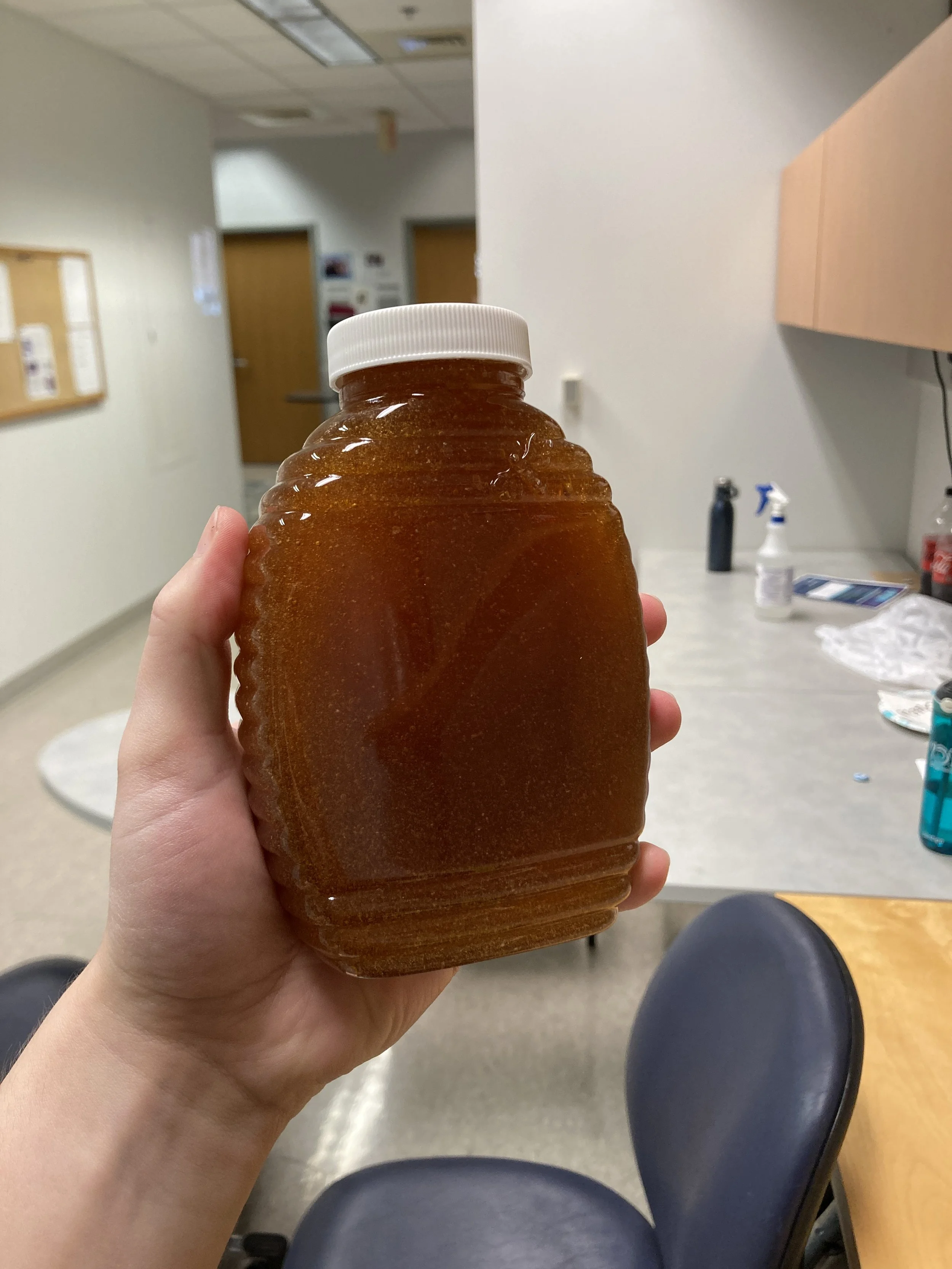Harvesting honey from our research beehives
This fall, we demonstrated how to harvest honey from our research beehives. We used two frames from one hive that has been particularly productive this season.
Keith holds a frame of capped honey, ready to be harvested!
The process was one long, sticky situation! First, we removed the top layer of beeswax and inserted the two frames into the hand-crank centrifuge.
Keith places the frame into the hand-crank centrifuge.
Then came the manual labor - it took two of us, but we got the honey out by centrifugal force! After that, the honey was drained through a sieve to separate out the remaining wax. About an hour later, we had a bowl full of honey, ready to try.
A bottle full of golden honey.
Success! From the two frames, we were able to harvest 3 small bottles of honey, like the one shown above.
The honey from our hives tends to be very sweet and floral. The bees forage anywhere in a 5-mile radius around Vanderbilt’s campus, where there are plenty of flowering plants to choose from. Our taste-testers hypothesize that the dominant flavor is magnolia, from the many Southern magnolia trees that grace our campus.
An image showing a short distance between our research beehives and Southern Magnolia trees on campus, depicted by yellow arrows.
Written by Ella Halbert



